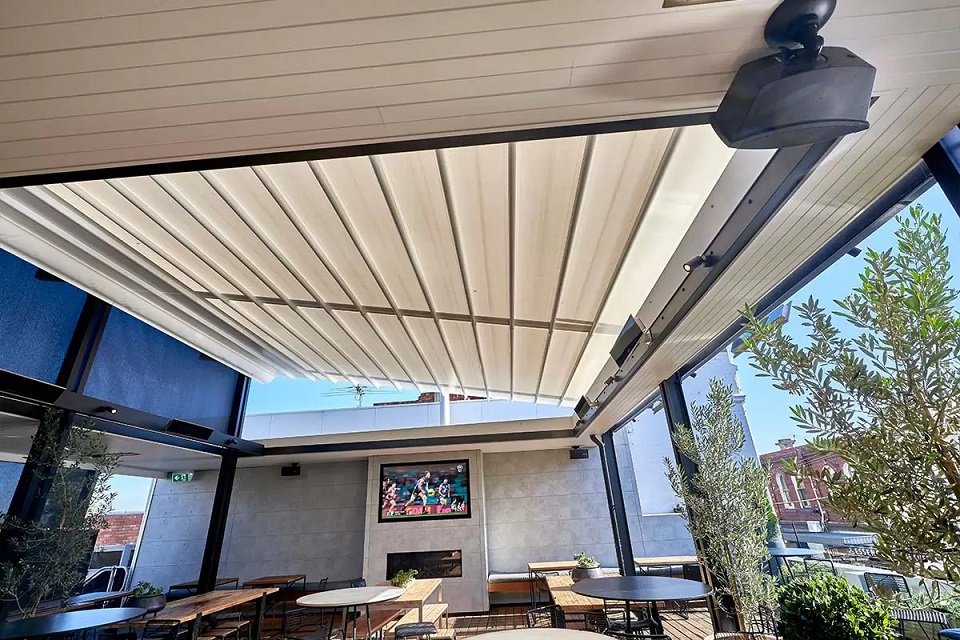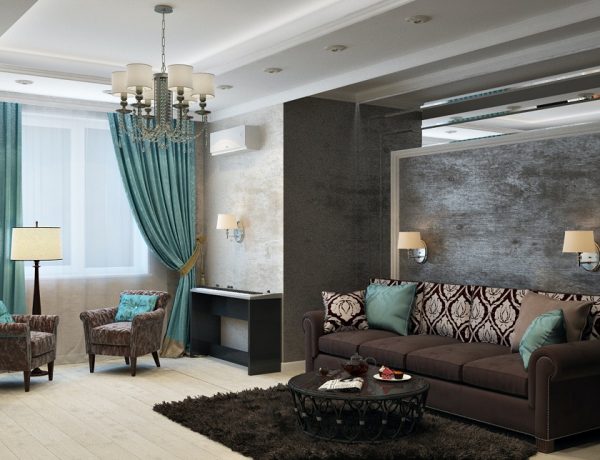Table of Contents
It’s no secret that urban areas can become sweltering hot, especially during the summer months. This phenomenon, known as the urban heat island effect, can be uncomfortable for residents and cause numerous health concerns. While traditional methods such as planting trees and installing reflective roofs can be effective, another potential solution that’s gaining popularity is the use of retractable fabric roofs.
We’ll explore how retractable fabric roofs can reduce the urban heat island effect, consider the best practices for implementing these roofs in urban areas, and highlight some of the latest technology and research below:
Raising The Roof On Heat Reduction
One of the main ways retractable fabric roofs help to reduce urban heat island effects is by providing shade. By shading buildings and surfaces from the sun’s rays, these roofs reduce solar gain or the amount of heat absorbed by surfaces in the urban environment. Additionally, retractable fabric roofs can be designed to allow for natural ventilation, which can also help to lower temperatures. All of these factors can help to mitigate the urban heat island effect, making for a more comfortable and healthy environment.
A Rooftop Revolution
While retractable fabric roofs can be highly effective at reducing urban temperatures, there are several challenges to implementing them in urban areas. One of the primary considerations is the size and orientation of the roof. Retractable fabric roofs are designed to provide maximum shading and ventilation and that requires careful planning and engineering. Additionally, materials used in the roof must be durable and able to withstand a variety of weather conditions, including strong winds and heavy rain.
Another consideration when implementing retractable fabric roofs in urban areas is community engagement. Collaboration with local stakeholders is essential to ensure that the roofs are designed in a way that meets the needs of the community. It’s important to consider factors such as the types of buildings in the area, as well as the cultural and social values of the community.
Looking Up But Under The Shade
To ensure that retractable fabric roofs are designed and installed effectively, several best practices should be followed. For example, it’s important to work with experienced architects and engineers who have a deep understanding of the requirements for retractable fabric roofs. These professionals can ensure that the roof is designed to provide optimal shading and ventilation while also meeting the specific needs of the community.
Another best practice for implementing retractable fabric roofs in urban areas is to consider the economic and environmental benefits. Retractable fabric roofs can reduce energy consumption by lowering the demand for air conditioning and other cooling systems. They can also help to reduce the number of greenhouse gasses emitted by buildings in urban areas, which can have a positive impact on the environment.
Saving Energy & Staying Cool
Aside from reducing urban heat island effects, retractable fabric roofs also have the potential to save energy and reduce costs for building owners. By reducing solar gain and providing shade, these roofs can help to reduce the need for air conditioning during hot weather, which can be a significant source of energy consumption in urban areas. In fact, according to the US Department of Energy, buildings consume 39% of the energy used in the United States, with a significant portion of that energy used for heating and cooling.
Retractable fabric roofs can help to reduce this energy consumption by providing natural ventilation and shading that can help to keep buildings cooler. This can result in lower energy bills and reduced demand on the power grid, which can help to reduce the environmental impact of urban areas. Also, by reducing the need for air conditioning, retractable fabric roofs can help to extend the lifespan of cooling systems and reduce maintenance costs for building owners.
Success Stories
Numerous successful retractable fabric roof projects have been implemented in urban areas around the world. One notable example is the retractable fabric roof that was installed at the Rogers Centre in Toronto. This roof was designed to provide maximum shading and ventilation while also being able to withstand the city’s harsh weather conditions.
Another successful retractable fabric roof project is the one that was implemented at the Ashgabat Olympic Stadium in Turkmenistan. This roof was designed to provide optimal shading for both the spectators and the athletes, while also being able to withstand strong winds and heavy rain.
Conclusion
Retractable fabric roofs are a promising solution to reducing urban heat island effects. They provide shade and natural ventilation, which can create a cooler and more comfortable environment for urban residents. However, implementing these roofs successfully requires careful planning, collaboration, and community engagement. With the right design and installation, retractable fabric roofs can help create a more sustainable and livable future for our urban communities. As technology advances, we can expect even more innovative solutions to address the challenge of urban heat island effects.





No Comments